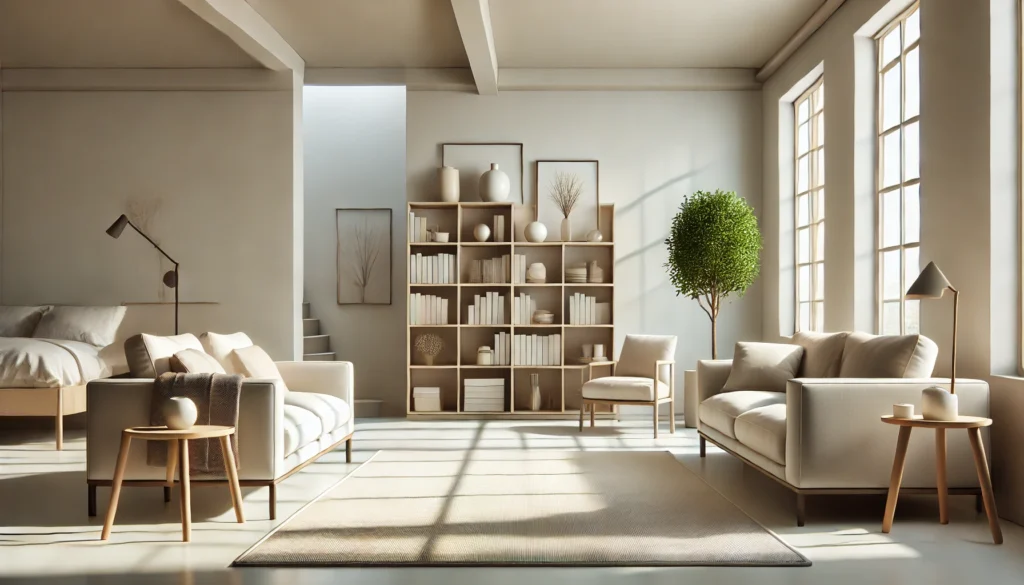Living a minimalist life is not about deprivation — it’s about intention. In a world full of distractions, chaos, and consumerism, minimalism offers clarity and focus. If you’re feeling overwhelmed by clutter, decisions, or the constant rush, it might be time to simplify.
Let’s explore how you can begin a minimalist lifestyle step by step, even if you’ve never thought of yourself as someone who could live with less.
What Is Minimalism, Really?
Minimalism isn’t just about owning fewer things — it’s about making room for what truly matters. That could mean decluttering your closet, simplifying your schedule, or cutting down on digital distractions. It’s about removing excess so you can focus on peace, purpose, and people.
You define what minimalism looks like in your life. For some, it’s a clean apartment with only the essentials. For others, it’s a commitment to living with intention and reducing stress.
Benefits of Living Minimally
Before diving into the how-to, let’s talk about why this lifestyle is worth considering:
- Less stress and anxiety – Fewer possessions and commitments = fewer things to worry about.
- More time and energy – Spend less time cleaning, shopping, and organizing.
- Improved focus and clarity – A minimalist space can help you think more clearly.
- Better financial health – You’ll naturally spend less when you stop buying things you don’t need.
- Freedom – Letting go of “stuff” often leads to emotional freedom and flexibility.
Step 1: Define Your “Why”
Start by asking yourself:
Why do I want to simplify?
Your reason might be to have a calmer home, more savings, better mental health, or more time for your family. This “why” will guide your journey and help keep you motivated when it gets tough.
Step 2: Start with One Area
It’s tempting to overhaul your entire life overnight, but that’s overwhelming. Start small.
Choose one area of your life or home to declutter or simplify. Common beginner spots include:
- A single drawer
- Your closet
- Your bathroom shelf
- Your phone (apps, photos, emails)
Pick one. Focus only on that.
Step 3: The 4-Box Method
When decluttering physical items, use the 4-box method:
- Keep – Items you love and use regularly.
- Donate – Items in good condition you no longer need.
- Trash – Broken or unusable items.
- Maybe – Unsure? Put them in a box with a date. If you don’t use them in 30 days, let them go.
This method gives structure to your process and keeps you from feeling paralyzed by decisions.
Step 4: Set Rules That Fit Your Life
There’s no one-size-fits-all minimalist lifestyle. Create simple rules that work for you:
- One in, one out (if you buy something new, donate something old)
- Capsule wardrobe (a limited number of mix-and-match pieces)
- No-buy challenge (avoid shopping for a certain period)
- Declutter 5 things daily
Make your own version of minimalism. It should support your values and goals.
Step 5: Practice Mindful Consumption
Minimalism isn’t just about getting rid of things — it’s about avoiding unnecessary accumulation.
Start asking yourself:
- Do I really need this?
- Does this add value to my life?
- Is this worth the space, time, and money?
Being intentional about what comes into your life is just as important as what you remove.
Step 6: Go Digital Minimalist
Physical clutter often mirrors digital clutter. Try simplifying your digital life:
- Unsubscribe from emails you never read
- Delete apps you don’t use
- Organize your desktop
- Limit screen time
- Turn off non-essential notifications
A tidy digital space helps clear your mental space too.
Step 7: Create a Minimalist Routine
Minimalism extends beyond physical space. Your time is also valuable.
- Prioritize rest and self-care
- Plan your day with fewer, more meaningful tasks
- Learn to say “no” to commitments that don’t align with your goals
- Build routines that support simplicity (like prepping meals or clothes the night before)
A minimalist routine leads to calmer mornings and smoother days.
Step 8: Declutter Your Relationships
This one’s tough but powerful. Evaluate your relationships with the same honesty as your belongings.
- Who uplifts you?
- Who drains your energy?
- Are your boundaries respected?
Minimalism includes letting go of toxic dynamics and focusing on authentic, nourishing connections.
Step 9: Let Go of Guilt and Perfection
You don’t need to live in an all-white, Pinterest-perfect home to be a minimalist. Let go of the pressure to do it “right.”
There’s no perfect way to simplify. It’s not about being extreme. It’s about being intentional. Some days you’ll feel in control. Other days will feel messy. That’s okay. Minimalism is a practice, not a destination.
Step 10: Keep Evolving
Minimalism isn’t something you achieve once and never touch again. As your life changes, your version of minimalism will change too. Regularly revisit your “why,” adjust your goals, and keep learning.
Remember: minimalism is a tool to help you live better — not a rigid set of rules.
Final Thoughts: Make Space for What Matters Most
At its core, minimalism is about freedom. The freedom to own your time, focus on what truly matters, and breathe deeper in a clutter-free space.
Start small. Be kind to yourself. Celebrate each step.
You don’t have to live with nothing — just with what counts.

